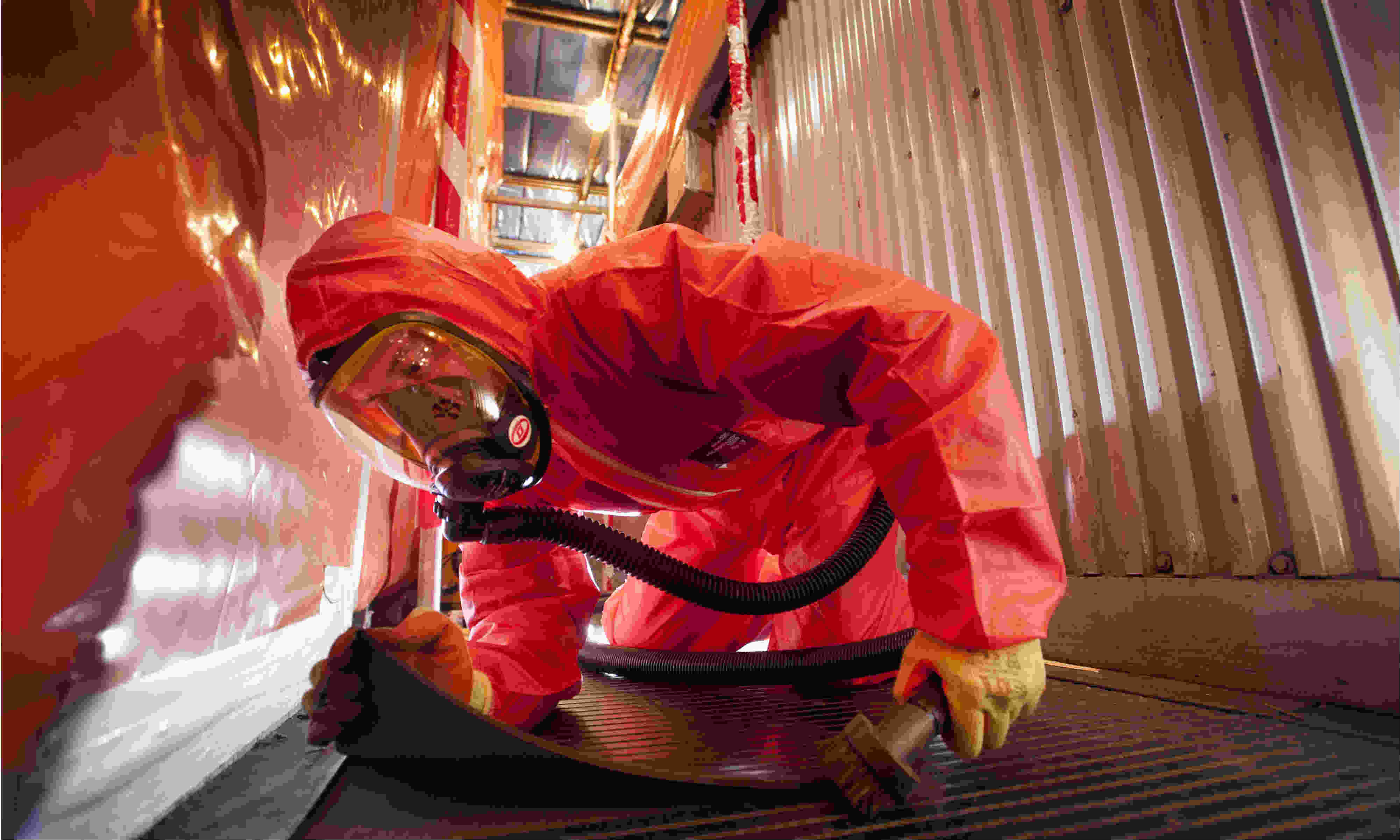There are few more emotive issues in the public buildings sector than asbestos. Asbestos-Containing Materials (ACMs) are still highly prevalent in thousands of buildings throughout our society, including schools and universities. However, with a huge amount of regeneration happening across the education sector, Darren Payne, Client Services Director at leading asbestos removal, demolition and remediation specialist Rhodar, explains why asbestos in education facilities should be spoken about more openly and treated as a problem to be solved, not stigmatised.
Campus environments present unique challenges when it comes to the safe removal or encapsulation of asbestos, not least in the diversity of their buildings, from Victorian-era constructions to CLASP buildings (Consortium of Local Authorities Special Programme) and 1960s concrete structures, many constructed or refurbished over the decades using asbestos containing materials. There’s clearly concern around asbestos, particularly in ‘live’ environments with high footfall, like schools, hospitals and universities, but there doesn’t need to be, if councils and education authorities have properly managed their asbestos containing materials within their building portfolios, which is mandatory by law under the duty to manage asbestos (contained in regulation 4 of the Control of Asbestos Regulations 2012*).
Getting it right
Even allowing for this mandatory duty, many in the education sector still don’t have a compliant and robust asbestos management plan and often choose to undertake localised refurbishment or maintenance projects without undertaking the proper invasive checks or surveys (helpful guidance can be found in ‘HSG264 - Asbestos: The survey guide’** from the Health and Safety Executive (HSE)) by qualified, competent and ideally UKAS-accredited asbestos consultants. This has caused an increasing and often publicised problem of work being undertaken by unregulated and even uninsured tradesmen.
Work to remove or encapsulate ACMs must be carried out by a competent and vetted asbestos removal contractor. For most higher-risk work with asbestos, that contractor must also have an HSE licence. Most local authorities have framework contracts or approved lists in place with pre-vetted, well-established and qualified asbestos specialists that schools, whether under LA control or not, can and should tap into, and there are other enabling frameworks in operation with competent contractors available to all educational establishments. Cutting corners or failing to seek suitably qualified contractors should never be an option.
There is much misinformation around asbestos and kneejerk reactions to asbestos – “Don’t mention the ‘A’ word!” – are common. That’s why it’s important to engage everyone in the asbestos discussion within your properties to ensure a better understanding for all; ACMs are perfectly fine to leave in situ if they are in good condition and managed properly. Interestingly, the sight of an asbestos specialist’s vehicle on school grounds can make people nervous, with parents known to keep their children off school as a result. However, it must be stressed again that schools that do contain asbestos that is managed properly are in fact safe environments and the presence of a competent asbestos consultant and removal contractor is actually evidence of correct procedures and good practice being carried out. Rhodar operates clear lines of communication with schools and universities to ensure full agreement of working processes and timescales so that staff, students and parents can be kept fully informed.
Unique challenges
Rhodar has extensive experience of working within all educational building types and environments, including local authority schools, private schools, academies, colleges and universities. These are often complex environments working in multiple-use buildings and departments including chemistry labs, leisure facilities, plant rooms and high-rise classroom blocks, with most projects undertaken in shutdown and holiday periods to tight deadlines - low-key working with effective segregation in busy locations is often essential in term-time, too.
When seeking an experienced asbestos removal contractor in educational estates, there are specialist frameworks including university purchasing consortia such as the NEUPC, NWUPC, SUPC and LUPC, that will assist estates and procurement teams if they don’t already have a formal contracted specialist in place. Schools are still high on the agenda for the government and Rhodar’s experience and knowledge gained on previous government backed schemes, such as Building Schools for the Future (BSF), PSPB2 schemes and the academies programme can aid nominated responsible people in choosing the right specialist in schools. Our services are now becoming increasingly engaged by contractors involved in the new ESFA (Education and Skills Funding Agency) school building programme, with 400 new schools being built each year and legacy buildings being stripped of ACMs and demolished.
Every day’s a school day
Due to initiatives like CLASP, which led to hundreds of asbestos-containing ‘pre-fabricated’ structures being built between the 1950s and 1980s to address a schools shortage and increase capacities in universities in the UK, there is still a wide range of asbestos containing material in the UK education building portfolio. This is a challenge which can only be fixed by open and clear communication and collaboration between the specialist consultants, contractor, the institution, local authorities and parents.
As new schools are built and universities regenerate, this poses a significant ongoing challenge for local authorities, educational institutions and reputable contractors to take a more positive and proactive approach to tackling asbestos in the right and proper way. For every new school built there’s usually an existing structure to deal with safely, but instead of seeing an asbestos vehicle as a cause for alarm, let’s instead see it as a sign of good practice and proper procedures to the benefit of all.
Notes to editors
Established in 1976, Rhodar is the largest asbestos removal, demolition and remediation company in the UK, with a team of over 500 highly trained people and 14 offices nationwide. In summer 2018, Rhodar rebranded to formalise its specialist package of enabling works services, asbestos removal, remediation and demolition services, under one banner. Visit www.rhodar.co.uk for more information.


